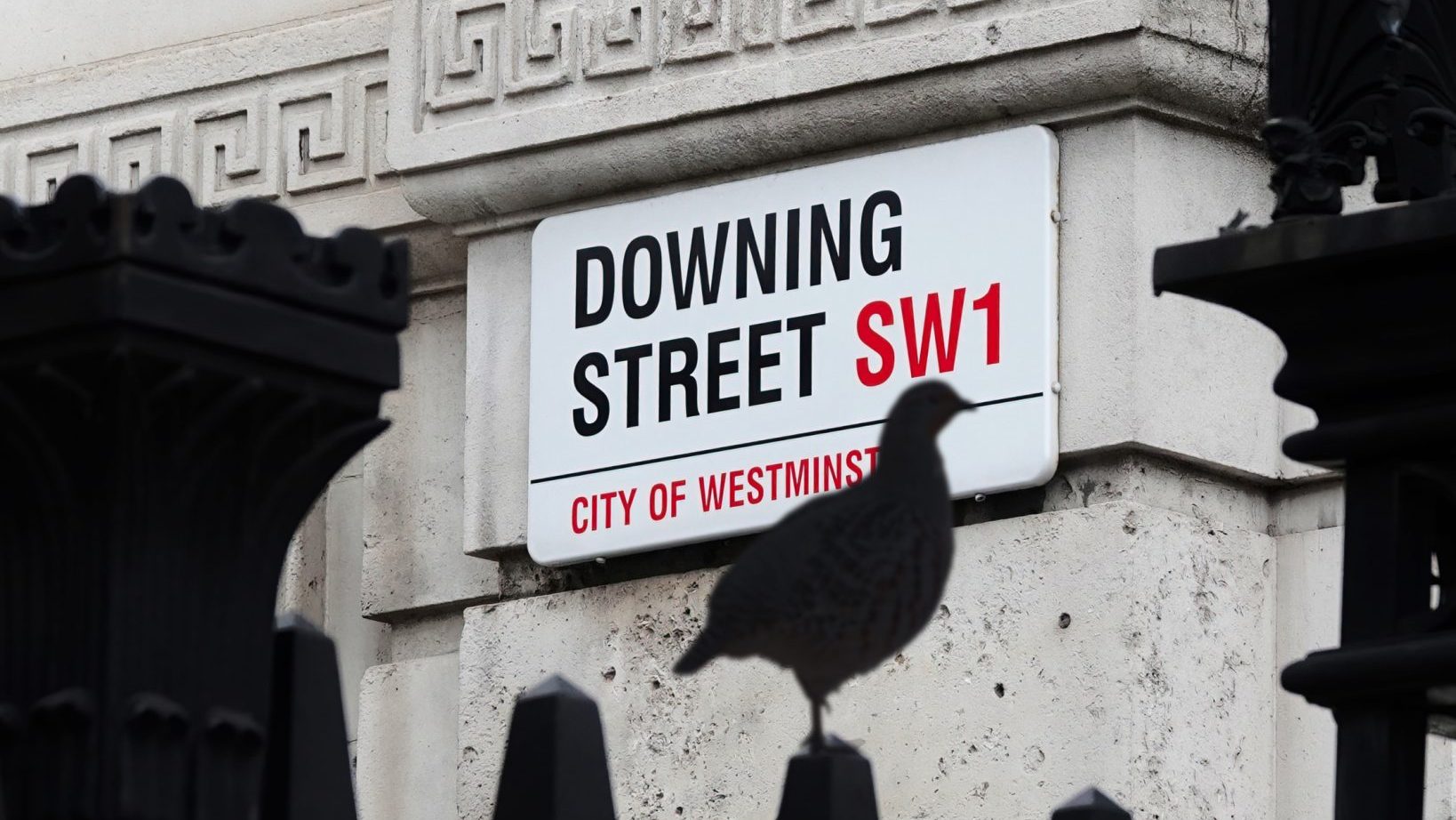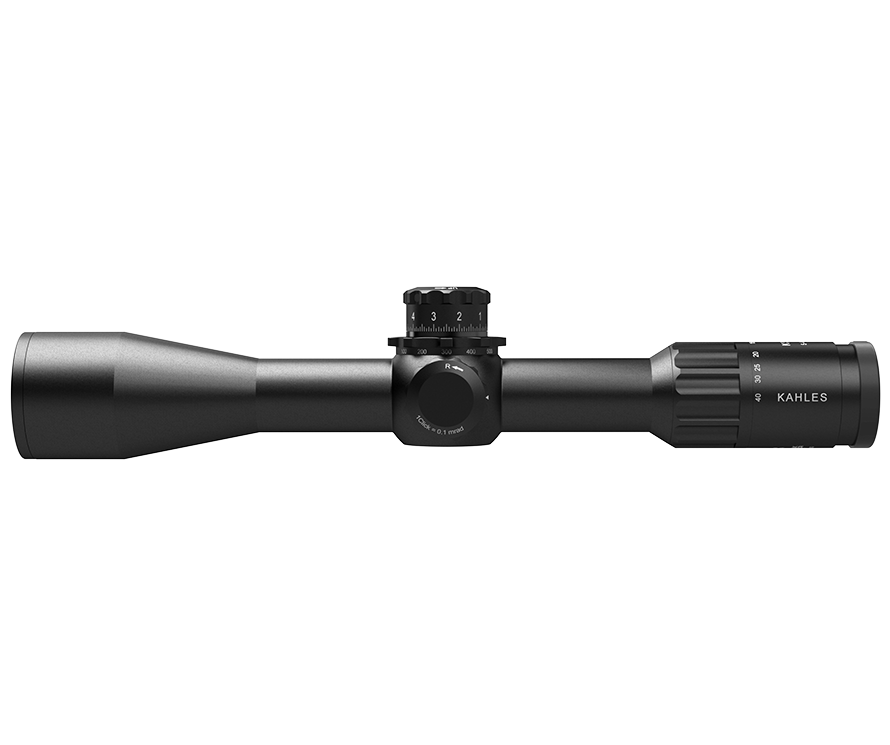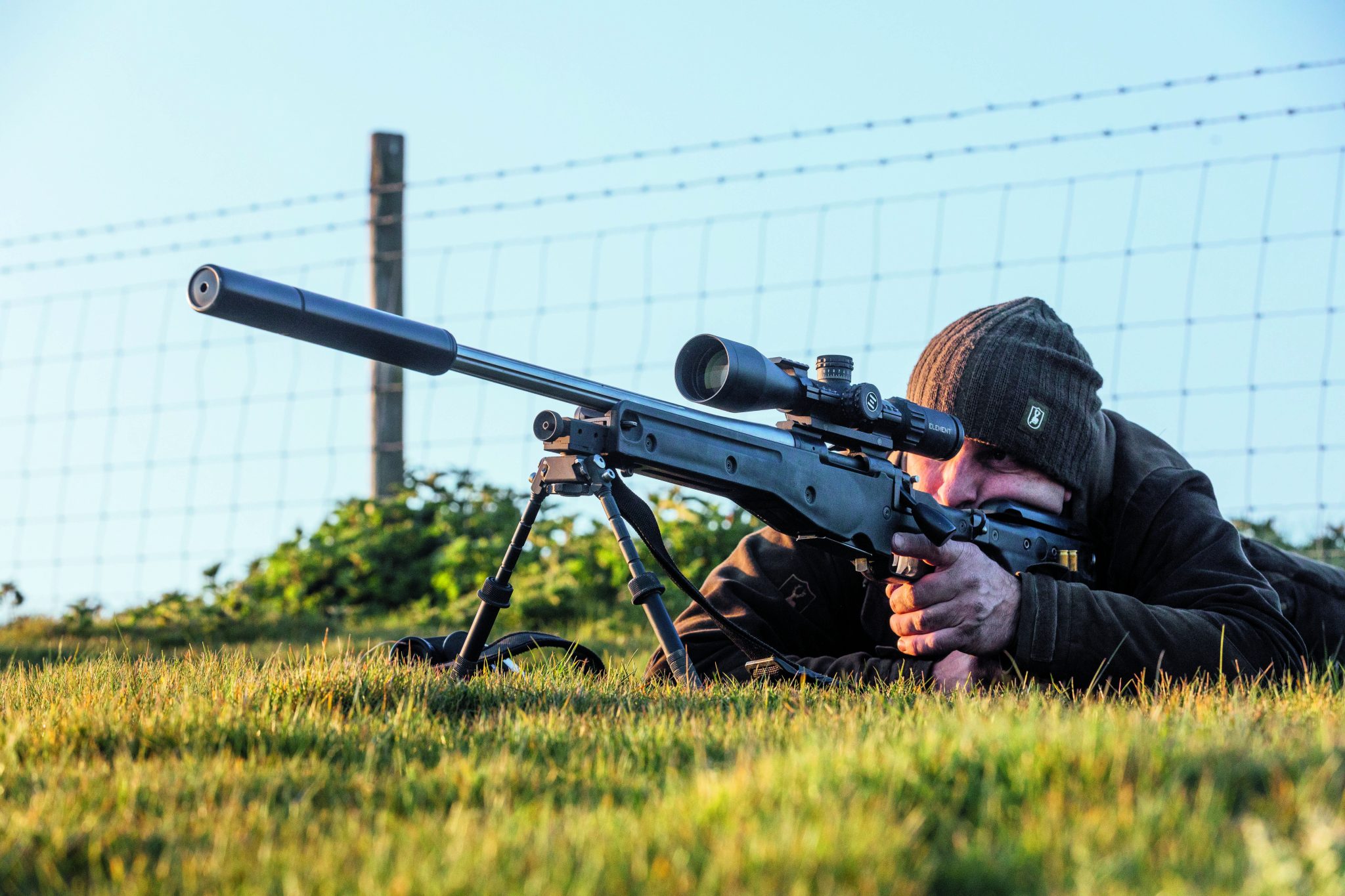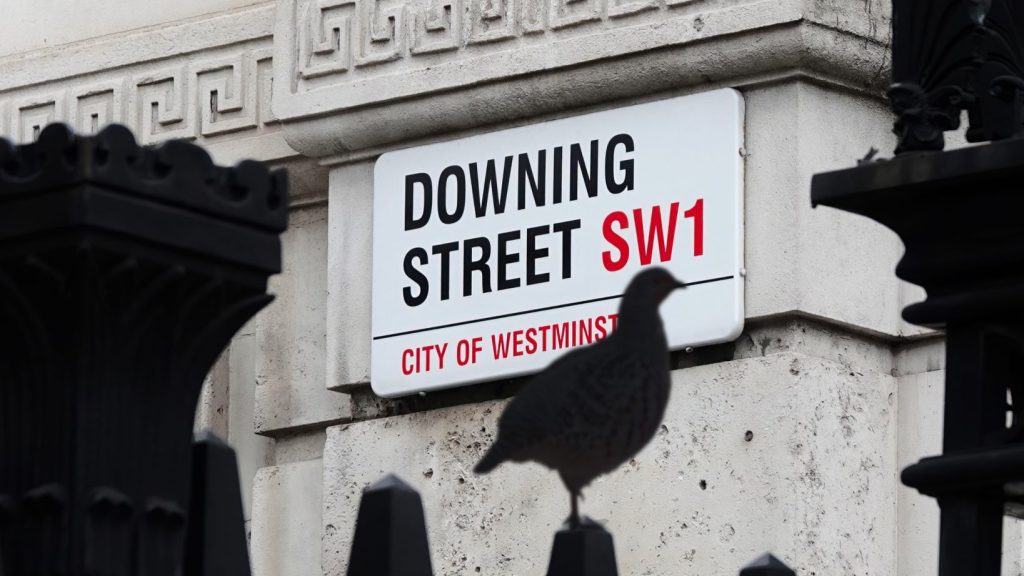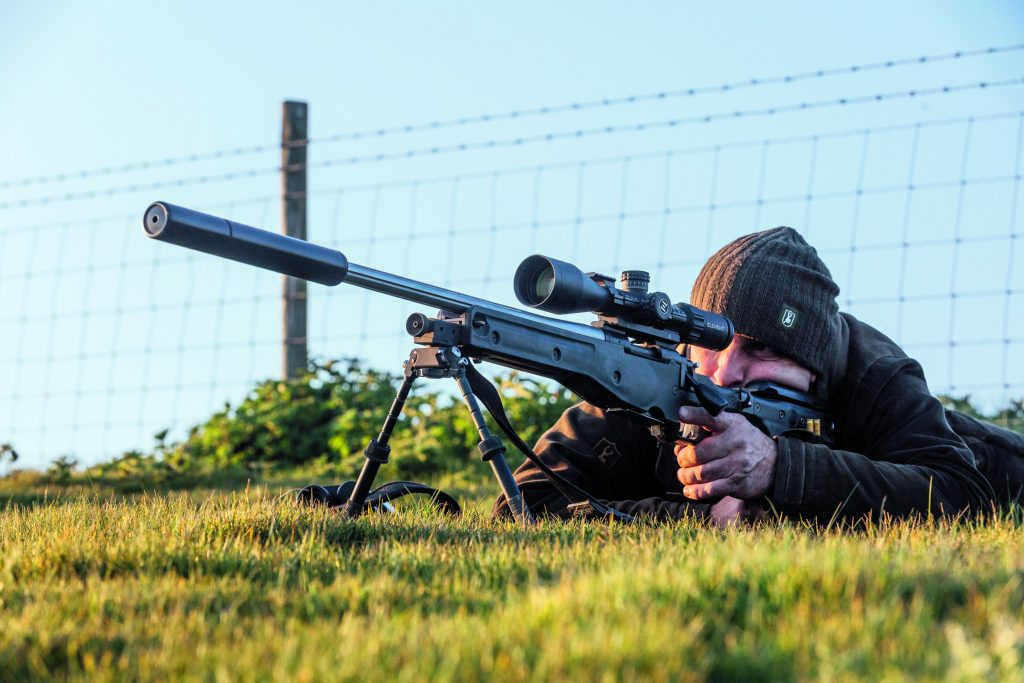News
Gunmaker’s solo success
Tony Jackson meets a highly skilled and versatile gunmaker from West Dorset, Michael Rainback, and discovers that the gun trade is still thankfully thriving
Would you like to speak to our readers? We offer sponsored articles and advertising to put you in front of our audience. Find out more.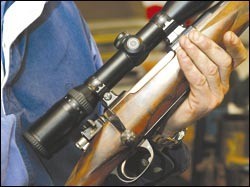
Unlike its much larger brother the British motor manufacturing industry, which is now virtually extinct, the gun trade in this country is in a surprisingly healthy condition. This is despite the fact that in terms of the number of independent gunmakers still in business, it is a relatively minor industry compared with the halcyon days of a century or so ago. There is, of course, a cluster of renowned names in the world of gunmaking ? Purdey, Holland & Holland, Westley Richards and Boss ? but there are, too, the lesser but equally important lights, the independent gunmakers, a few still acting in the capacity of outworkers to the trade and who underpin this still thriving industry.
One such gunmaker is Michael Rainback, who can be discovered hidden away in a tiny village in West Dorset. His workshop is attached to his house and, like the workshops of all gunmakers, is a joy to behold ? that is if you like the sporting clutter of guns, barrels, rifles, scopes, walnut blanks, esoteric machinery, all overlooked by roe and sika heads, not to mention a tanned hippopotamus hide lurking in a corner. This is the joy of the real gunmaker’s workshop and, of course, you never know who you’ll meet there.
Just as I arrived to see Michael, who should be leaving having just collected a rifle but Tom Troubridge, of the UK Trophy Commission and a member of the CIC, who had also brought along the massive roe head that he shot last year and which could be the new world record head if it receives confirmation in Europe.
Michael Rainback was brought up in the world of gunmaking, for his father, Ken, used to work for Holland & Holland, and when he decided to go it alone, he opened a shop, called Guns and Sports, in Wareham, Dorset. Once he left school, Michael worked for his father for nine years and though not an official apprenticeship, he acquired a wide range of skills. He then decided to move to London to gain further experience, working for Paul Roberts when his shop was in King Street, Covent Garden, and moving with him to Great Southwark Street, south of the Thames, when Paul acquired Rigby’s.
Michael worked with Paul for a further nine years, gaining a wide range of different skills, including stocking and new gun finishing, rather than just relying on one particular technique, but changed his status to self-employed and so was able to act also as an
outworker for other gunmakers and dealers.
Michael remained in London for 14 years, building up his business. He then decided to move back to Dorset as a full-time gunmaker. Now established for a decade, he has no need to advertise, for all work comes through contacts and word of mouth. “My father used to say that good work takes a long time to build up,” said Mike, “but bad work will ruin you overnight. I’ve always tried to establish my name through quality and honesty.”
Michael Rainback would not claim to be able to make a shotgun from scratch as there are too many skills involved. “In a factory,” he says, “a gun will go through various different shops, including barrel making, action work, stocking, regulating, finishing and engraving, and I don’t know of anyone who can make a gun from start to finish on their own.”
Where new guns are concerned, he specialises in finishing, including preparation for engraving, regulating the mechanism and then the final work required to ensure metalwork and woodwork are pristine and ready for the customer. A steady flow of shotguns also come in for service and repair, not only from customers in the south of England, but also from the trade in London and even from abroad.
The work here may involve run-of-the-mill repairs or full restoration, such as restocking or rebarrelling. Work turnaround obviously varies enormously depending on what is required. Certain jobs, such as gunfitting, may be accomplished in one or two weeks, others may take up to a year or more. Where gunfitting is concerned, Michael can either arrange to meet a client at a local clay ground, such as Graham Brown’s Purbeck Shooting School, near Bere Regis, or, if the client prefers, the initial adjustments can be done in the workshop.
Living in an area renowned for its roe and sika stalking, it is hardly surprising to find that not only is Michael an enthusiastic and experienced stalker but that he receives numerous rifles for servicing, repair, alterations and upgrades from local stalkers. Much of the work involves the regulation of trigger-pulls and the fitting of new scopes and sound moderators.
Michael explains that moderators are becoming smaller and more efficient, and the two most popular moderators he is asked to adjust to rifles are the Reflex T8 and T4, and Ase Utra S5. The Ase is of steel construction, while the Reflex moderators are made from Parkerised steel. The latter tend to be a little bigger and more cumbersome that the Ase
Utra, which is a more compact unit.
Can he make a rifle? Certainly, and he does in fact build a sporting rifle under his own name. He makes it clear that there are certain processes he cannot undertake, though he sees through the overall development and the rifle can be in any calibre the customer requires, provided it’s not too obscure. Every hand-built rifle should be distinctive, claims Michael, a precept he pursues by trying to ensure that each rifle he builds retains a consistency and continuity in terms of shape and design, emphasised by distinctive bolt shape, stock profile and even the scope rings.
In terms of calibre for stalking, Michael’s own preference is for .270, a calibre which will handle tough sika, especially stags in the rut. Another calibre he rates very highly is the .25-06, which shoots flat and fast. Many stalkers, myself included, have tended to avoid the .270 as it had a reputation for being more fierce than was desirable but, as Michael points out, “a lot of the older .270s were very light and had a great deal of drop on the stocks, so if not held quite right, they tended to “bite”. Today’s .270s have a far more modern profile, tend to be built with slightly heavier barrels and if used with a moderator can be calmed down.
And the cost of a custom-built Rainback rifle? Well, it all depends on what the customer wants. Currently, Michael is building a .30-06 with exhibition-grade Turkish walnut and engraving by master engraver Dave Tallatt, formerly from Purdey, and who now works in Kent. With its own case, this rifle will cost in the region of £10,000 plus VAT. However, a standard rifle will usually be in the region of £2,000 to £2,500.
For more details, tel (01305) 853737 or email rainback@globalnet.co.uk
Related articles
News
Anti-grouse shooting petition crushed by MPs who don't even shoot
Wild Justice's petition to ban driven grouse shooting was quashed in Westminster Hall yesterday, with all but one MP opposing the ban
By Time Well Spent
News
A sound decision as moderators to be taken off licences
The Government has finally confirmed what the shooting community has long argued – that sound moderators should be removed from firearms licensing controls
By Time Well Spent
Manage Consent
To provide the best experiences, we use technologies like cookies to store and/or access device information. Consenting to these technologies will allow us to process data such as browsing behavior or unique IDs on this site. Not consenting or withdrawing consent, may adversely affect certain features and functions.
Functional Always active
The technical storage or access is strictly necessary for the legitimate purpose of enabling the use of a specific service explicitly requested by the subscriber or user, or for the sole purpose of carrying out the transmission of a communication over an electronic communications network.
Preferences
The technical storage or access is necessary for the legitimate purpose of storing preferences that are not requested by the subscriber or user.
Statistics
The technical storage or access that is used exclusively for statistical purposes.
The technical storage or access that is used exclusively for anonymous statistical purposes. Without a subpoena, voluntary compliance on the part of your Internet Service Provider, or additional records from a third party, information stored or retrieved for this purpose alone cannot usually be used to identify you.
Marketing
The technical storage or access is required to create user profiles to send advertising, or to track the user on a website or across several websites for similar marketing purposes.

